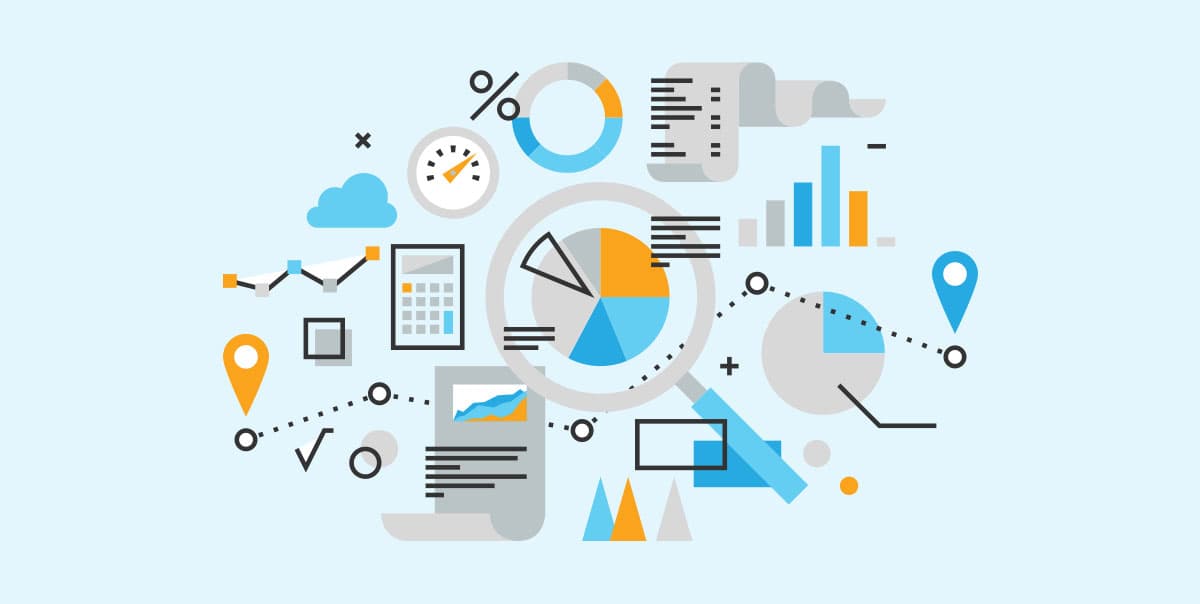Data-Crunching Your Way to Your Ideal Customer
Charlie Curnow
 How many business-to-business (B2B) companies, especially startups, clarify who their ideal customer is upfront before unleashing their sales teams? Not enough, according to MIT Sloan Management Review.
How many business-to-business (B2B) companies, especially startups, clarify who their ideal customer is upfront before unleashing their sales teams? Not enough, according to MIT Sloan Management Review.
The authors, Frank V. Cespedes, a senior lecturer at Harvard Business School, James P. Dougherty, information technology (IT) entrepreneur and lecturer at MIT Sloan School of Management, and Ben S. Skinner, head of an Atlanta-based sales consulting firm, write that the wealth of data now available on businesses and their managers create tremendous opportunities for managers at B2B firms to improve sales productivity through detailed customer profiling. Here are three steps inspired by this research that data-savvy businesses can take to analyze their way to their ideal customer.
1. Embrace big data—even if your business is small
The search for your ideal customer begins with collecting and analyzing data on your current customers. Since different units within your business may have different ideas about what’s relevant, selection criteria for ideal customers may need to come from senior leadership. Depending on your business, however, common factors to consider may include customer profits, revenues, headcount, industry, and location.
Once your search team knows what to look for, some data will likely come from publicly available sources such as annual reports, websites, or press releases. The rest will come from your business’s own transaction histories. Common factors to examine may include:
- Win rate
- Average sale price
- Average sales cycle length
- Up-sale rate
- Churn rate
Different customer and transaction characteristics will correlate with different sales objectives. When examining their data, search teams may find that cost of sales to individual customers generally align with the length of sales cycles. Profitability may roughly correlate with customer size. Or the lifetime value of the customer may track the size and rate of the customer’s own growth.
For some companies, assembling this type of data on their customers may be easy, according to Cespedes, Dougherty, and Skinner. Large companies that have grown over many decades may find that their problem is too much data. For smaller companies, getting customer data may present more of a challenge.
As Seshu Edala, a data scientist with Manta.com, a small business community website, noted, the data analytics gap between small businesses and their larger competitors may be narrowing. This is especially true for small companies that are more deeply integrated into the digital universe of websites and social media through services such Quantcast, Alexa, Facebook Insights, and Google Analytics, “The Web has always been a great leveler, and new Web-enabled technologies are putting more and more big data capabilities into small businesses’ hands,” writes Edala.
2. Build your model of your “ideal customer.” Refine. Repeat.
Once you’ve decided which transaction characteristics are most important, build a model of a customer who will be likely to display those characteristics using the data you’ve collected.
Say you’re that a cloud-based provider of software services for sending faxes over the web. Based on your customer data, you may hypothesize that your ideal customer is a business with between 10 and 20 employees, in an urban location, that has been in business for at least three years. This may be, among other possible reasons, because businesses of this size may be large enough to have significant faxing needs but small enough to require outsourced IT services, maybe early adopters of new technology, and maybe stable enough to have a low chance of breaking a service agreement before their contract runs out.
Your next step is to run this model by people in different parts of your company. People in client service, marketing, and sales may be best able to assess characteristics that distinguish customer interaction behaviors. Frontline employees in finance, operations, and product groups, however, may be best able to assess the cost implications of customer behavior. As entrepreneur Anthony K. Tjan wrote in the Harvard Business Review, “It’s the employees who are closest to serving and supporting the customer who get an unfiltered view of how customers interact with a product or service.”
Once you’ve received feedback from each of these stakeholder groups, you may refine your ideal customer’s profile. To return to the example of the cloud-based enterprise fax software provider, suppose your client service team tells that your most enthusiastic customers really seem to be businesses with between 15 and 35 people, rather than 10 and 20. You may choose to increase the target size of your hypothetical ideal customer based on this feedback.
3. Communicate your ideal customer profile to your sales team
The final stage is to communicate this profile to your frontline sales reps. To return to the online faxing example, suppose that despite the characteristics of your ideal customer profile, your frontline sales force has been making most of its contacts with high-tech firms that have under 10 employees. This could have dramatic implications for the prioritization of your sales team’s call list.
Suppose that statistical analysis reveals that each meeting your sales team has with a law firm yields an average of three referrals, whereas the average number of referrals from all prospects is just 1.5. You may choose to incentivize your sales team to add law firms to your contact list or favor salespeople with contacts in the legal industry when expanding your sales force in the future. Data-driven changes like these can be essential to achieving more efficient customer selection, and smarter opportunity management.
“A customer ultimately represents a stream of orders for the seller,” Cespedes, Dougherty, and Skinner write. “That order stream, in turn, has a domino effect on the company’s business.”
Time to bridge the sales-data divide?
Despite the potential gains, the use of big data analytics in support of sales seems yet to catch on. A 2012 survey by Lattice found that just 16% of companies surveyed had implemented big data strategies for sales. Of those respondents, however, 71% saw the potential for big data to have a big sales impact.
As consulting firm McKinsey has noted, one of the biggest barriers to widespread adoption of big data in direct support of sales may be that statistics-friendly analysts, who are largely embedded within marketing departments, still aren’t simplifying their findings enough to make them useful to their frontline salespeople.
While making complex statistical analysis directly actionable for salespeople may be difficult in many cases, there are practical steps that companies can take. These include targeting ideal customer profiles to a few key salespeople who already cover similar leads, or boiling complex customer models down to a few key guidelines.
According to Cespedes, Dougherty, and Skinner, it’s when young companies grow beyond a certain critical size that data can become most critical to the sales process. Early business growth leads to improvised methods to assess sales opportunities, as well as seat-of-the-pants forecasting and business development initiatives.
Companies that learn from their experiences by analyzing the data they’ve accrued through customer transaction histories are best positioned to achieve scalable processes for profitable growth. If your company already tracks sales transaction data, the next step is to import this unstructured data into a database with statistical processing capabilities (such as SAS, IBM’s SPSS, and cloud alternatives like Google’s BigQuery). Implementing such software packages could cost tens of thousands of dollars depending on your data storage and usage requirements, but the return on investment could be well worth it for your business if it leads to smarter selling.
Get sales tips and strategies delivered straight to your inbox.
Yesware will help you generate more sales right from your inbox. Try our Outlook add-on or Gmail Chrome extension for free, forever!
Related Articles
Melissa Williams
Melissa Williams
Casey O'Connor
Sales, deal management, and communication tips for your inbox

